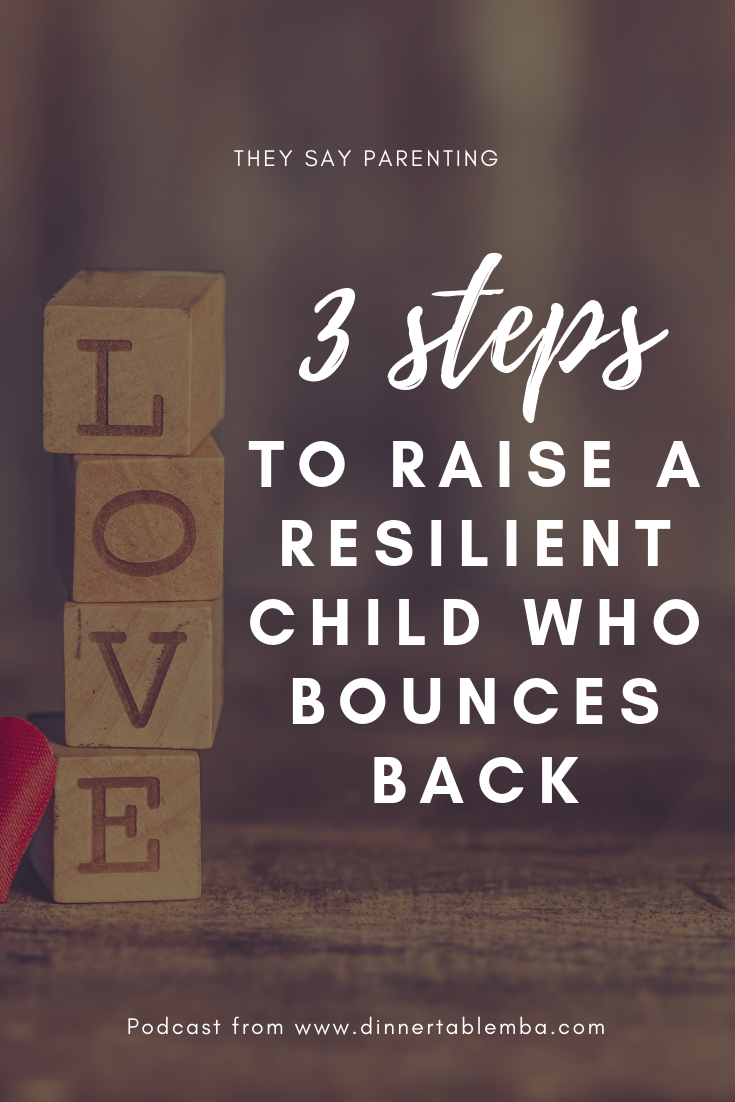3 Steps to Raise a Resilient Child Who Bounces Back
(Posted on Thursday, December 20, 2018)

I am thrilled to be featured in a podcast from Dinner Table MBA. The podcast focuses on how to raise a resilient child who can bounce back.
Resilience is not something we are simply born with. It is something that is learned. On the podcast, I talk about three ways we can help build resilience in our children. I will summarize these three ideas here.
You can listen to the full podcast, including commentary from Dinner Table MBA, at any of these links:
Link to Dinner Table MBA’s Full Blog Post
Positive Thinking
First, we can open up our children’s minds to positive thinking and we can provide opportunities for them to practice.
When we feel like we are failing at something it is so easy to give up, to be sad, or to believe that we can’t do it. Instead, we can encourage our children to be positive, to let the situation motivate us to choose a different route, and to keep trying.
Through Failure We Grow
We must realize that our children will fail in their lifetimes— plenty of times— even if we try so hard to protect them. When this happens, we can remind them that failure is not all bad. Through failure, we learn. Together with our children, we can talk through a failure and try to find what they may have gained from the situation. There is always something to gain, even if it is simply learning what to do differently the next time.
It is always okay for them to feel sad or to feel emotion when they fail. It is important to process that emotion with them, to allow them to feel it, but then, we can learn.
Coping Skills
Lastly, we want to teach our kids the skills to cope. Tough experiences in life, like loss or grief—a friend moving away, or a death, for example—can also teach resilience when we find ways to cope and move forward. In order to cope or find peace in a difficult situation, we must have coping skills.
Here are some examples of coping skills we can teach:
- Using their words to describe feelings
- Using art to describe their feelings: They can draw a picture which describes how they feel. For older children, you can draw a big circle. Your child can make a pie chart by color-coding their current emotions inside. You can then talk about the emotions they include.
- Talking to someone they trust when they feel bad
- Deep breathing—they can close their eyes and focus on their breaths
- Counting to ten, even backwards if they are a bit older
- Squeezing a stress ball
- Turning negative thoughts into positive thoughts, so instead of saying to themselves, “I will never get through this” they can practice saying, “I will feel better. It will just take time.”
- Participating in something they enjoy
Even adults are still learning about resilience. Sometimes as parents, we can feel we are making mistakes. We can see our mistakes as failures. We can see failure as something bad. Building resilience can be a life-long process, so it’s never to early to start.
Remember, coping does not mean pushing something aside and ignoring it. It means dealing with our feelings in healthy ways and then finding peace or a way to move forward.
Dinner Table MBA is a wonderful resource for parents and children. They inspire parents to have meaningful conversations with their children about important life lessons around the dinner table. These lessons can impact the future of our children in a positive way. Be sure to check them out on their blog, or over on Instagram and Facebook.
To learn more about me and my blog check out: About Lauren
If you enjoyed this post, you may also enjoy: Sometimes Strength Requires a Break or What Does It Mean to Be a Parent